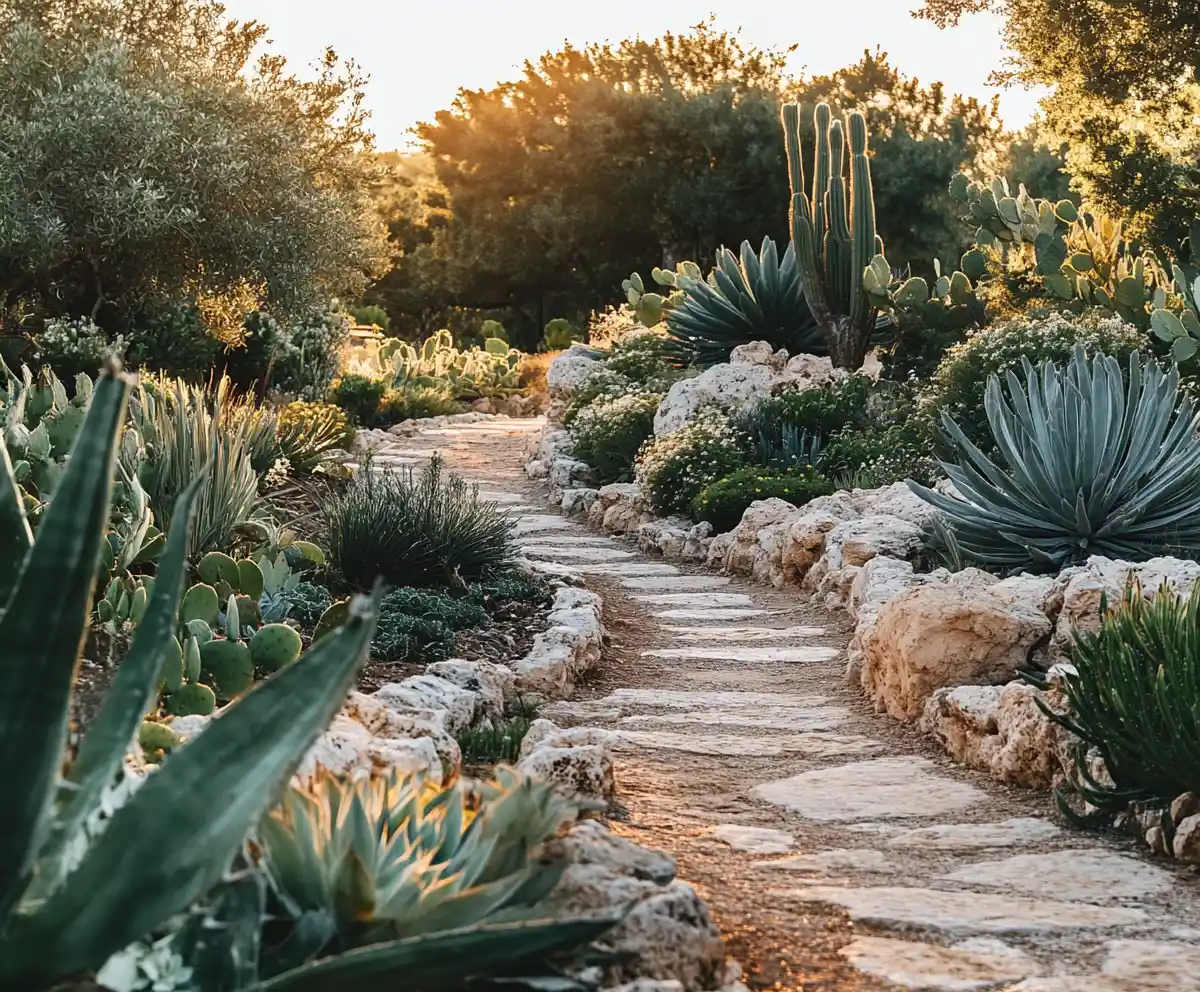If you’re dreaming of a yard that’s as stunning as it is low-maintenance, diving into succulent landscape design ideas is a smart move. Succulents bring a world of benefits to your outdoor spaces — from their incredible drought resistance to their bold textures and vibrant colors. Whether you’re dealing with a sun-drenched backyard or a cozy courtyard, succulents offer endless possibilities for creative, eco-friendly designs. By mixing planters, natural stones, vertical gardens, and a variety of textures, you can craft a landscape that’s not only beautiful but also easy to care for year-round.
Succulent Landscape Design Ideas
Zen Garden Oasis
Turn your outdoor space into a peaceful retreat with a Zen-inspired succulent garden. Start by layering smooth river stones, soft sand, and a curated selection of low-growing succulents like echeveria and haworthia. Arrange the sand into gentle raked patterns to evoke the calming energy of traditional Japanese gardens. Use larger rocks as focal points and group small succulents around them to mimic natural landscapes. This minimalist approach not only highlights the beauty of each plant but also creates a meditative space perfect for relaxation.
Coastal Vibes
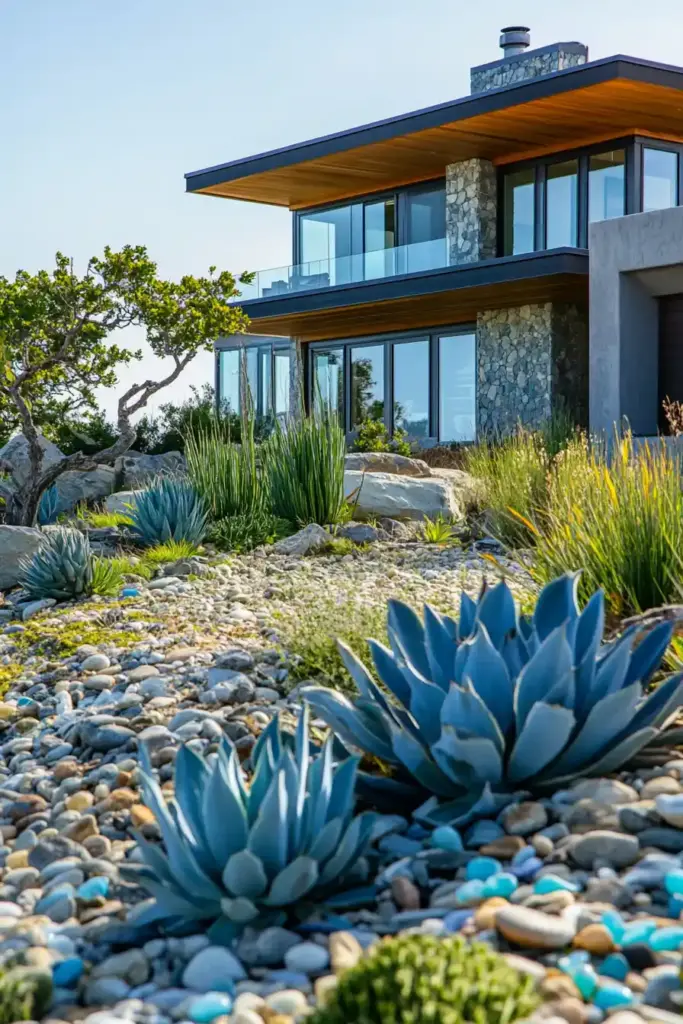
Bring the breezy charm of the seaside to your backyard with a coastal-inspired succulent landscape. Focus on using blue-green succulents like blue chalksticks (Senecio serpens) and sea-urchin inspired echeverias to mimic the colors of the ocean. Accentuate your design with driftwood pieces, smooth seashells, and white pebbles scattered throughout for a natural beachy feel. To complete the look, incorporate grasses like blue fescue to add movement, and choose weathered wooden planters that evoke a rustic, coastal vibe. This design not only looks refreshing but also thrives in sandy, well-drained soil, making it ideal for coastal climates.
Cacti Wonderland
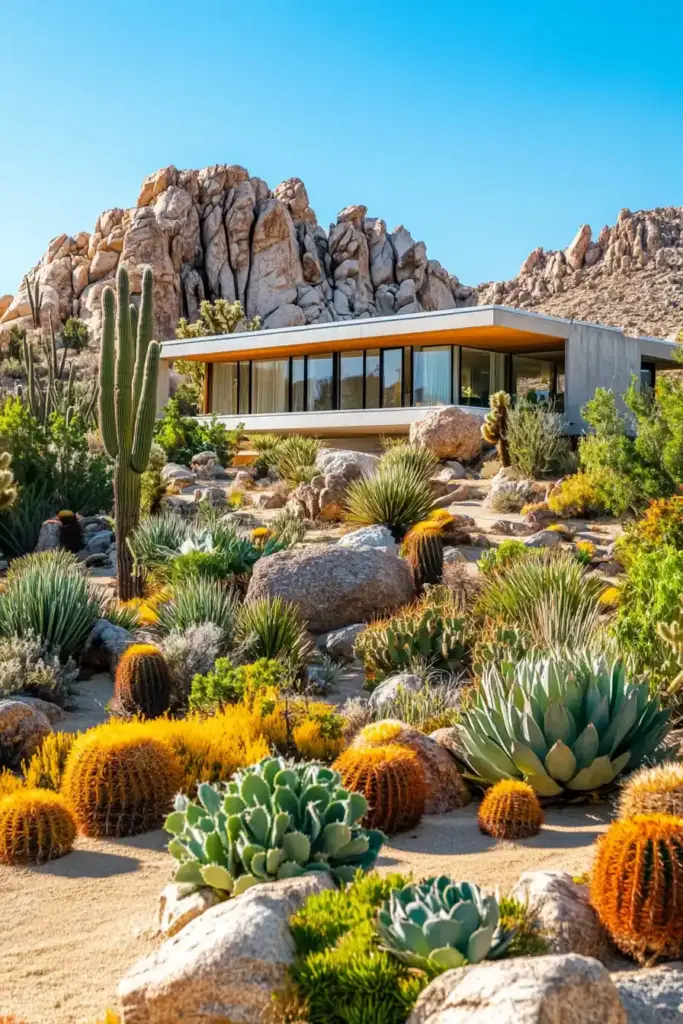
Create a bold, dramatic landscape by designing your very own cacti wonderland. Focus on an eclectic mix of tall, sculptural cacti like saguaro or organ pipe alongside sprawling ground covers like ice plants or trailing sedums. Arrange them in natural groupings to mimic desert landscapes, using sandy soil and plenty of open space between plants to emphasize their striking forms. Add large boulders and gravel mulch to complete the rugged desert look. This setup not only thrives in hot, dry conditions but also becomes a show-stopping feature of your yard with minimal upkeep required.
Rustic Barrel Planters
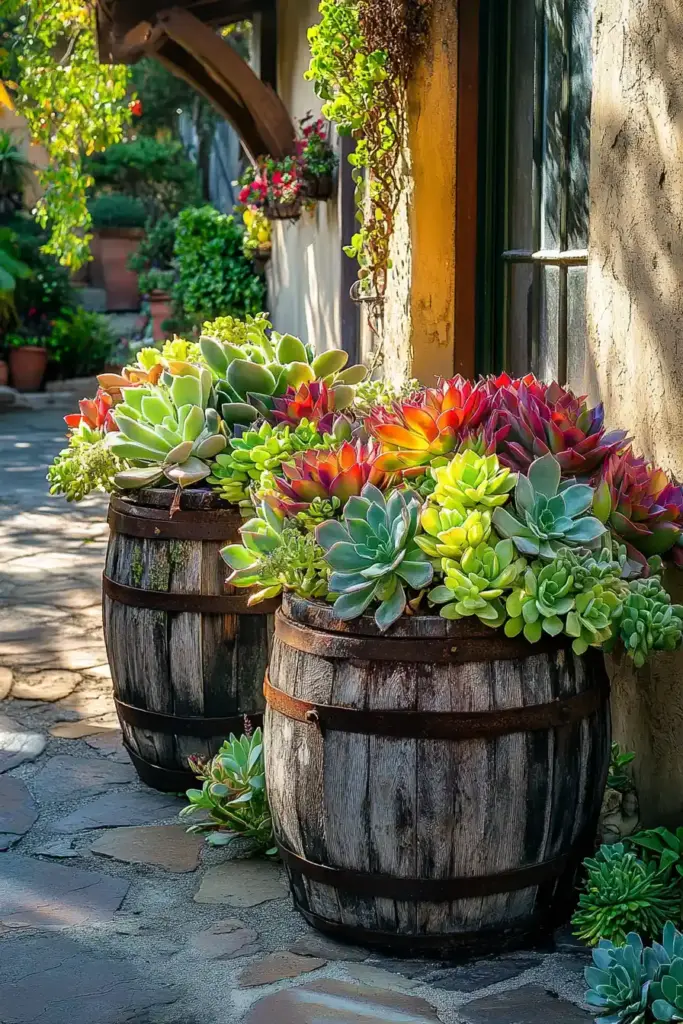
For a cozy, farmhouse-inspired touch, try incorporating rustic barrel planters into your succulent garden. Repurpose old wine or whiskey barrels by cutting them in half and filling them with a rich variety of succulents like hens-and-chicks (Sempervivum) and trailing burro’s tail (Sedum morganianum). The warm, weathered wood of the barrels contrasts beautifully with the vibrant greens, blues, and purples of the plants. Position the planters near patios, pathways, or as standalone features to add rustic charm and a sense of history to your outdoor space. Plus, the elevated height of barrels improves drainage—perfect for succulent health!
Succulent Pathway
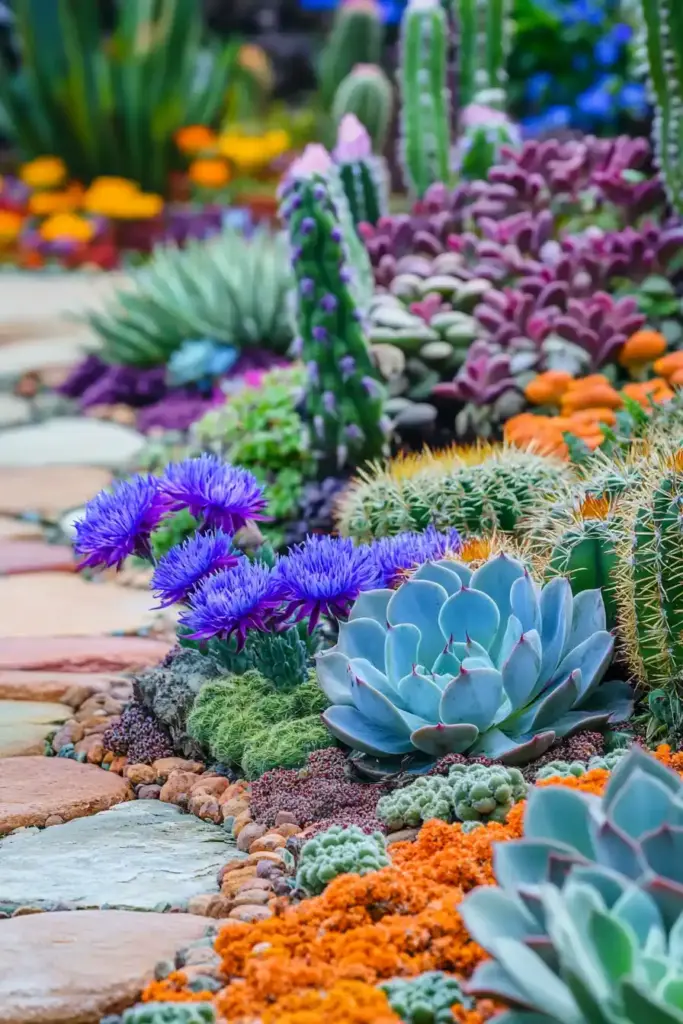
Enhance your garden’s natural beauty by lining your walkways with a lush succulent pathway. Choose low-growing varieties like stonecrop (Sedum) or dwarf jade (Portulacaria afra) to create a soft, inviting edge along garden paths. For added texture and color, mix in rosette-shaped plants like echeveria or compact aloe species. Use gravel, stepping stones, or decomposed granite as the base to ensure proper drainage and to highlight the vibrant greens, reds, and purples of your succulents. A succulent-lined path not only guides visitors through your garden but also weaves a continuous thread of living color throughout your landscape.
Vertical Gardens
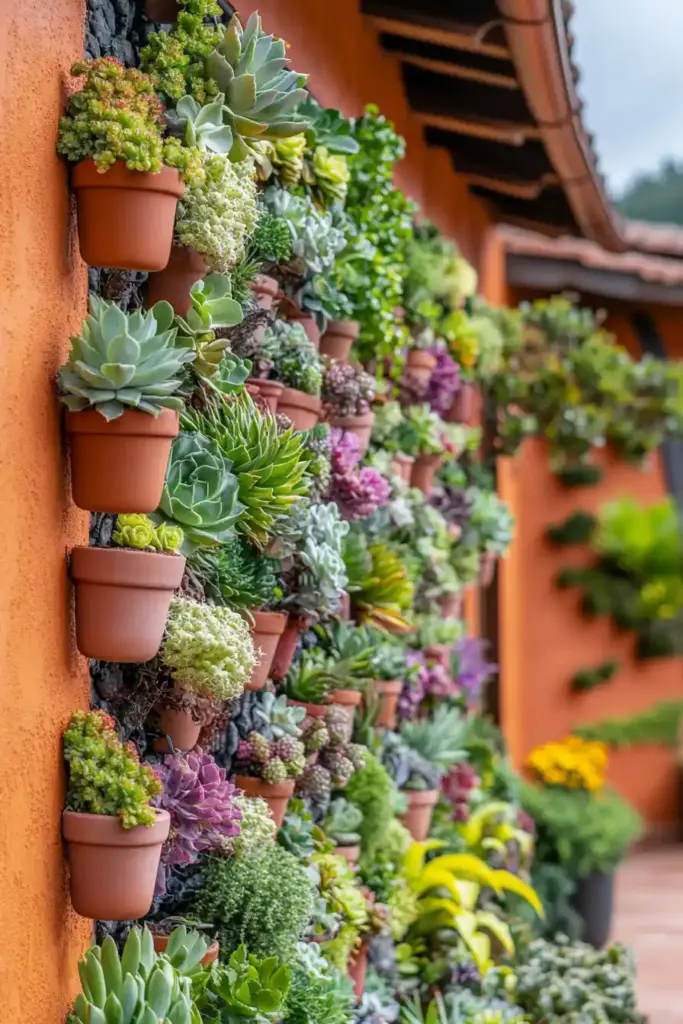
Maximize your garden space and make a bold statement with stunning vertical succulent gardens. Use wall-mounted planters, repurposed pallets, or hanging pockets to create living walls filled with colorful succulents like sedum, crassula, and kalanchoe. Arrange the plants in patterns or color gradients to add artistic flair. Vertical gardens are perfect for small yards, patios, or even balconies, and they offer excellent drainage and sun exposure — two things succulents love. Plus, these living walls not only save space but also act as natural focal points that add vibrancy and life to blank vertical surfaces.
Mixed Textures
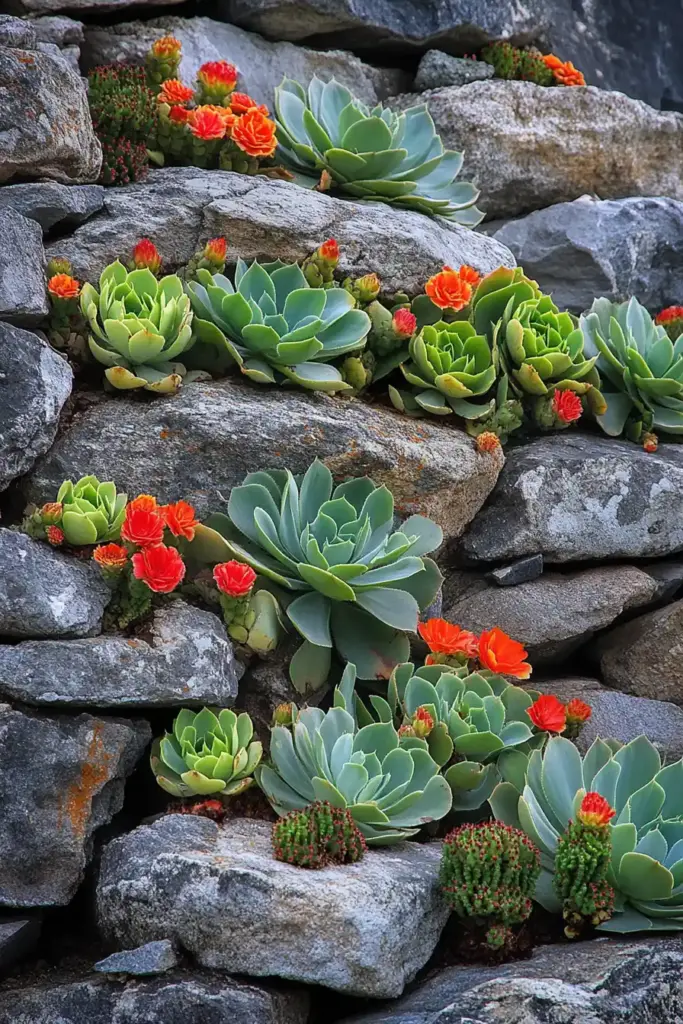
Add depth and visual intrigue to your garden by embracing mixed textures with your succulents. Combine smooth, glossy varieties like jade plants (Crassula ovata) with fuzzy, soft-leaved succulents such as panda plants (Kalanchoe tomentosa) and bold, spiky agaves. This variety in texture keeps the eye moving and creates a dynamic, layered effect. Group different textures together in clusters or spread them throughout the garden for a more natural look. By blending soft, rough, and structured forms, you can craft a succulent landscape that’s not only beautiful but also endlessly interesting from every angle.
Colorful Succulent Arrangements
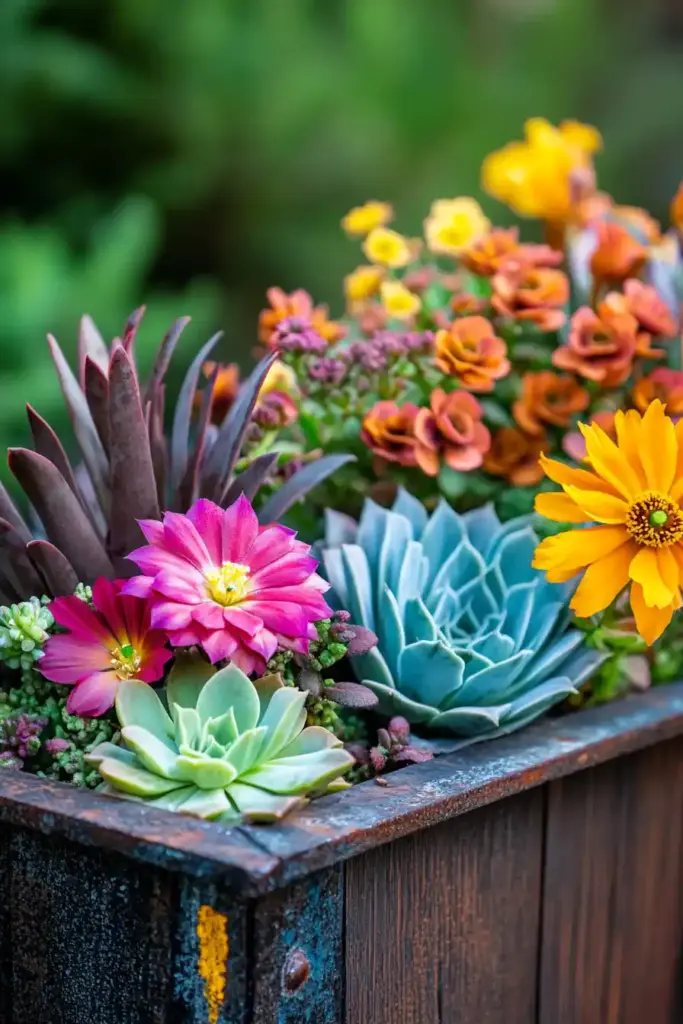
Brighten up your garden with colorful succulent arrangements that pop with visual excitement. Succulents naturally come in an amazing range of hues — from deep purples and vibrant reds to icy blues and sunny yellows. Create bold focal points by grouping plants like purple aeonium, red-tipped echeveria, and golden sedum together in the same bed or container. Arrange colors in gradients for a soft, blended look, or cluster contrasting colors for a more dramatic effect. By thoughtfully combining colorful succulents, you can design living artwork that changes subtly with the seasons and always draws the eye.
Xeriscaping
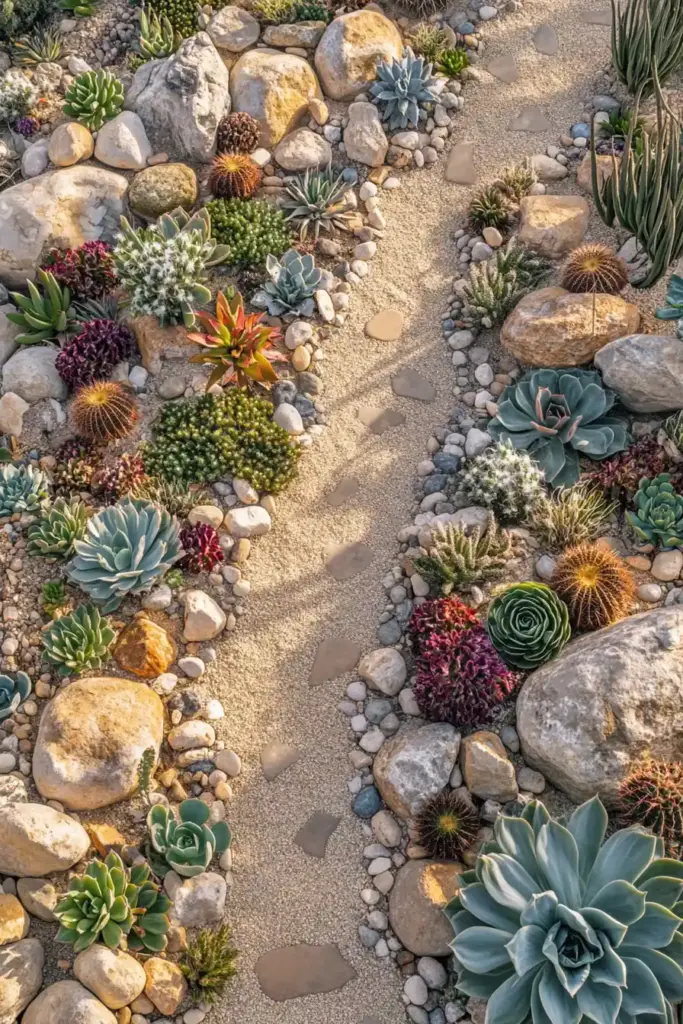
Embrace sustainability and beauty with xeriscaping, a landscaping style that conserves water by using drought-tolerant plants like succulents. Start by designing your garden with clusters of hardy varieties such as agave, aloe, and ice plants. Replace traditional grass lawns with gravel, sand, or decomposed granite to enhance drainage and reduce water needs. Incorporate natural elements like boulders and driftwood to add structure and visual interest without increasing maintenance. Xeriscaping not only lowers your environmental footprint but also creates a stunning, resilient landscape that thrives even in the hottest, driest climates.
Succulent Rock Gardens
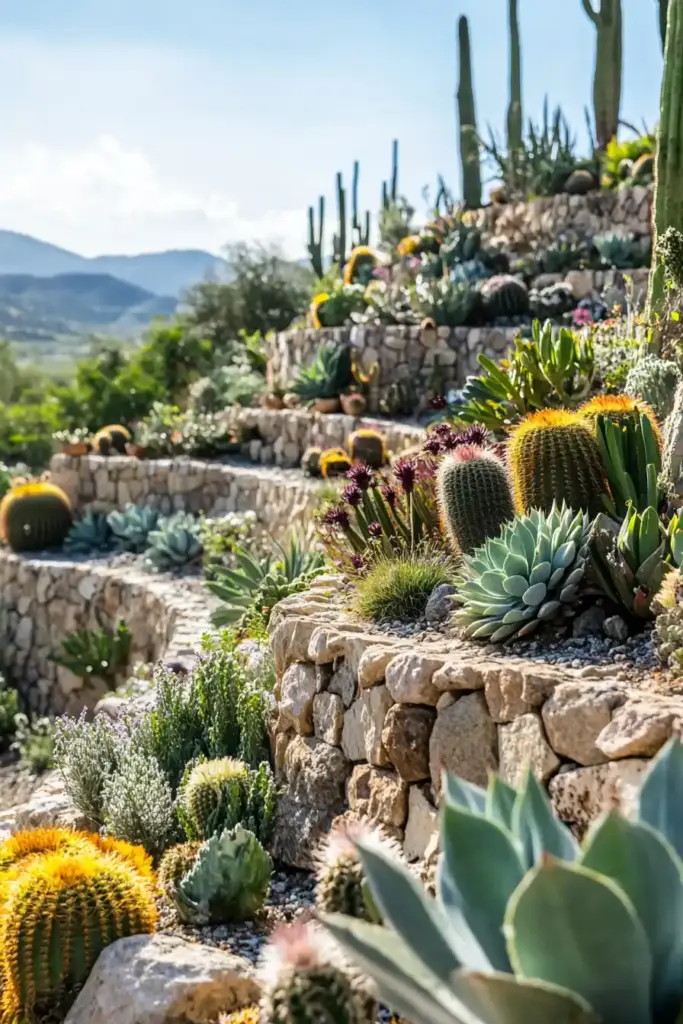
Blend the rugged beauty of stone with the vibrant charm of plants by creating succulent rock gardens. Start by layering various sizes of rocks and boulders to form natural elevations and pockets for planting. Choose hardy succulents like hens-and-chicks, sedum, and agave, placing them strategically between the stones to mimic alpine or desert environments. The rocks provide excellent drainage and help regulate soil temperature, which succulents love. This design not only adds dimension to flat landscapes but also gives your garden a natural, timeless look that’s both low-maintenance and visually striking.
Artistic Succulent Container Gardens
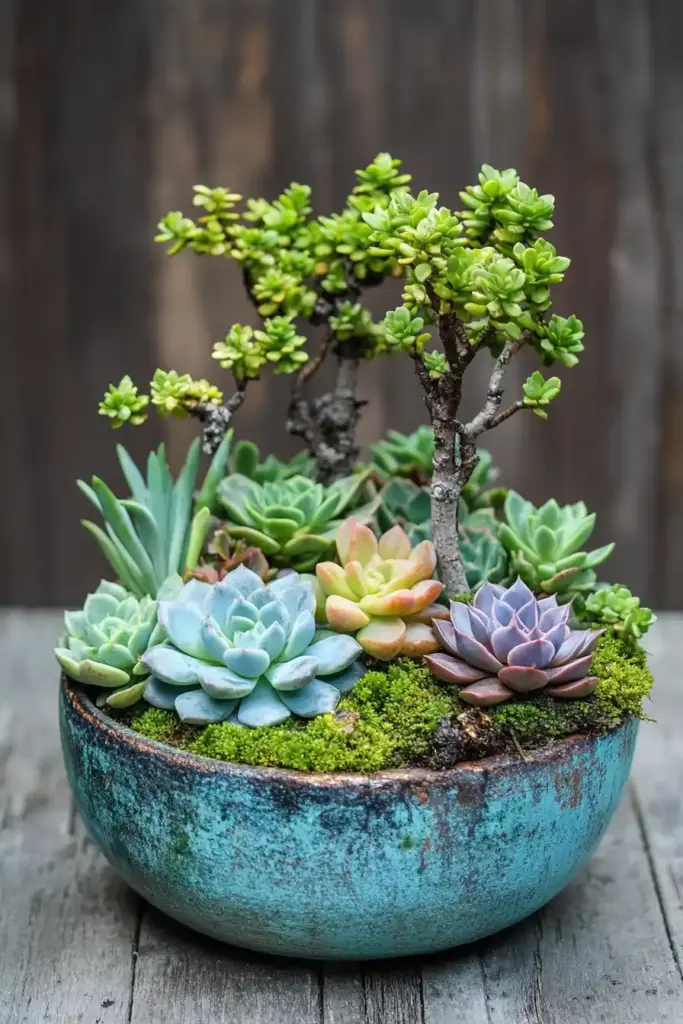
Unleash your creativity with artistic succulent container gardens that act as living masterpieces. Select decorative pots, vintage vessels, or even upcycled items like teacups and birdcages as unique planters. Mix and match different succulent species — such as string of pearls (Senecio rowleyanus), zebra plants (Haworthia), and echeverias — to create vibrant contrasts in shape, color, and size. Play with layers, letting some succulents spill over the edges while others stand tall in the center. These portable gardens are perfect for patios, balconies, or as eye-catching accents throughout your yard, offering beauty with minimal care.
Layered Heights
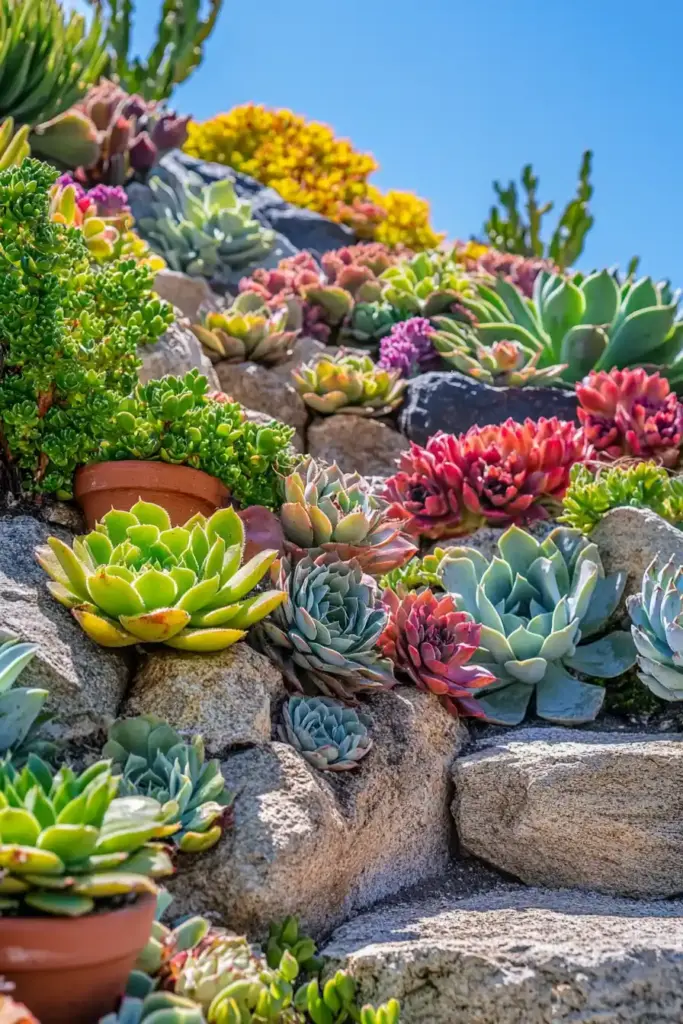
Give your succulent garden dynamic visual depth by incorporating layered heights. Arrange taller succulents like agave, aloe vera, or euphorbia toward the back of garden beds or in the center of round displays. Gradually step down to medium-height varieties like kalanchoe and crassula, and finish with low-growing ground covers such as sedum or small echeverias at the edges. This tiered approach not only creates a lush, full appearance but also ensures that every plant receives the sunlight it needs. Layering heights draws the eye upward and outward, making even small garden spaces feel larger and more vibrant.
Succulent Borders
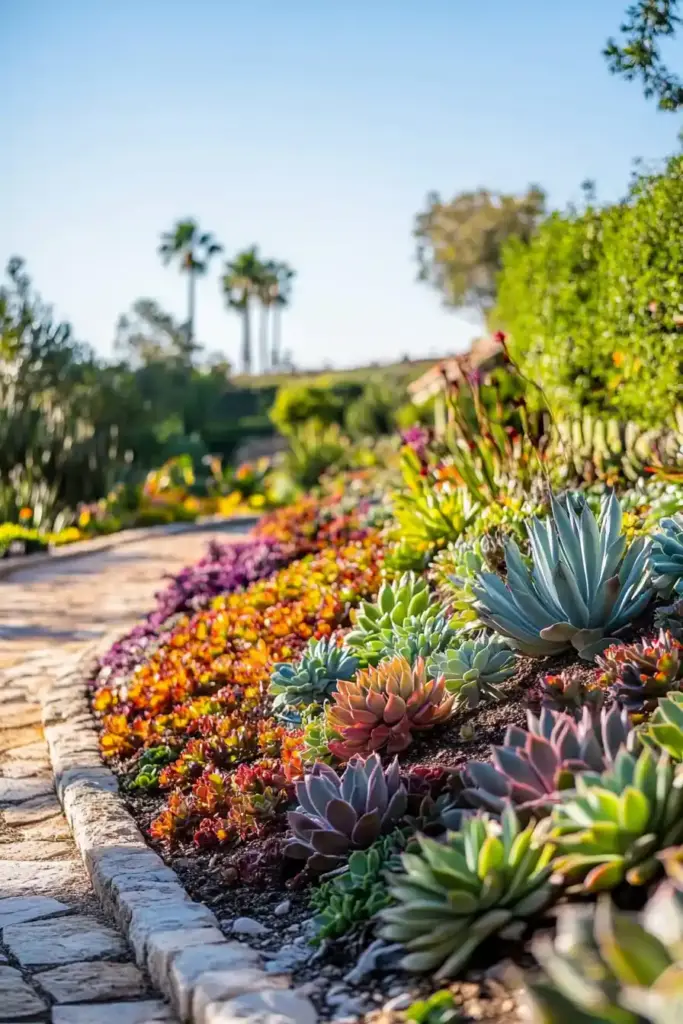
Frame your garden beds, walkways, or patios with charming succulent borders that offer both structure and beauty. Use low-growing, spreading varieties like stonecrop (Sedum spurium), blue chalksticks, or dwarf jade to create neat, living edges. You can arrange them in single-file lines for a clean, minimalist look, or cluster several types together for a more natural, flowing border. Succulent borders not only define spaces elegantly but also help with soil retention and reduce weed growth. Their colorful foliage and textures add year-round interest, making them a practical and stylish addition to any landscape.
Succulent Wall Art
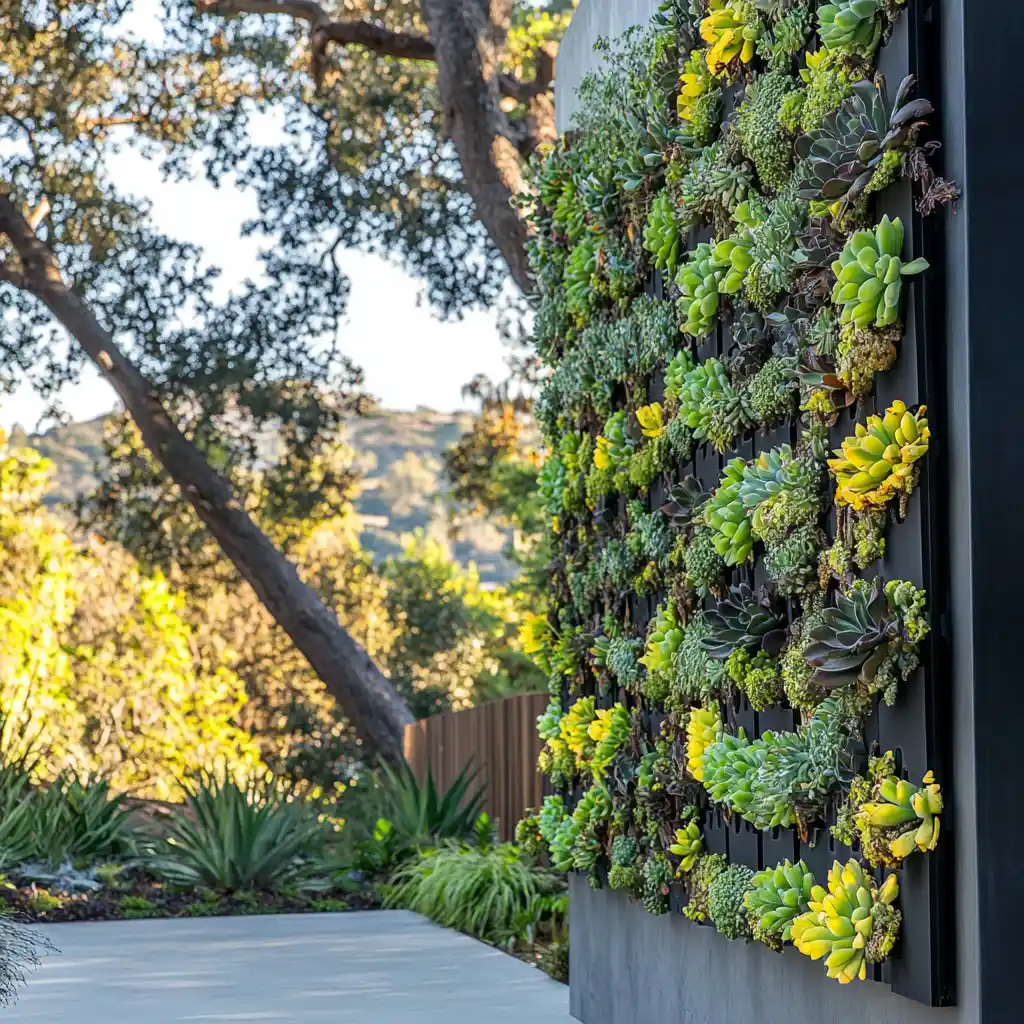
Turn a blank wall or fence into a living masterpiece with succulent wall art. Use shallow frames, vertical planters, or specially designed succulent panels to arrange small rosettes, trailing varieties, and colorful species into intricate patterns or abstract designs. Choose hardy, shallow-rooted succulents like sempervivum, echeveria, and sedum to thrive in these vertical displays. Regular misting and proper drainage are key to keeping your wall art vibrant and healthy. This creative touch not only adds a stunning visual focal point but also brings life, texture, and color to otherwise overlooked vertical spaces.
Drought-Resistant Ground Cover
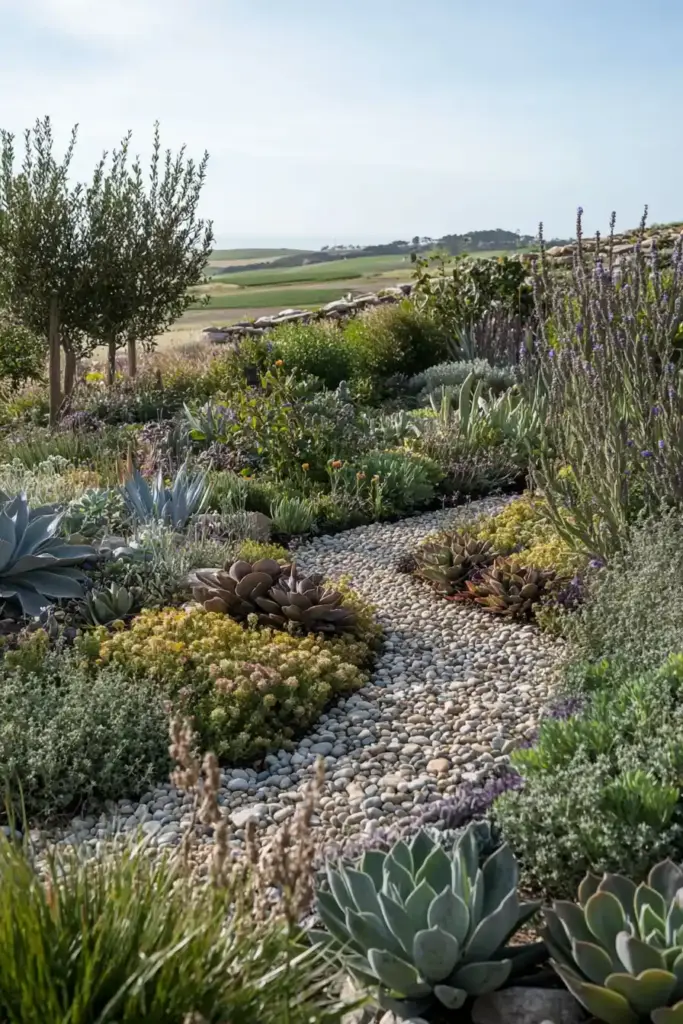
Transform bare patches of soil into lush, water-wise carpets with drought-resistant succulent ground covers. Sprawling varieties like sedum, ice plant (Delosperma), and creeping stonecrop are perfect for covering large areas while minimizing the need for watering and weeding. These low-maintenance plants form dense mats that suppress weeds, protect soil from erosion, and add vibrant color and texture to your landscape. Whether you’re filling in between stepping stones or replacing a traditional lawn, succulent ground covers are a beautiful and eco-friendly solution for modern gardens.
Succulent Fountains
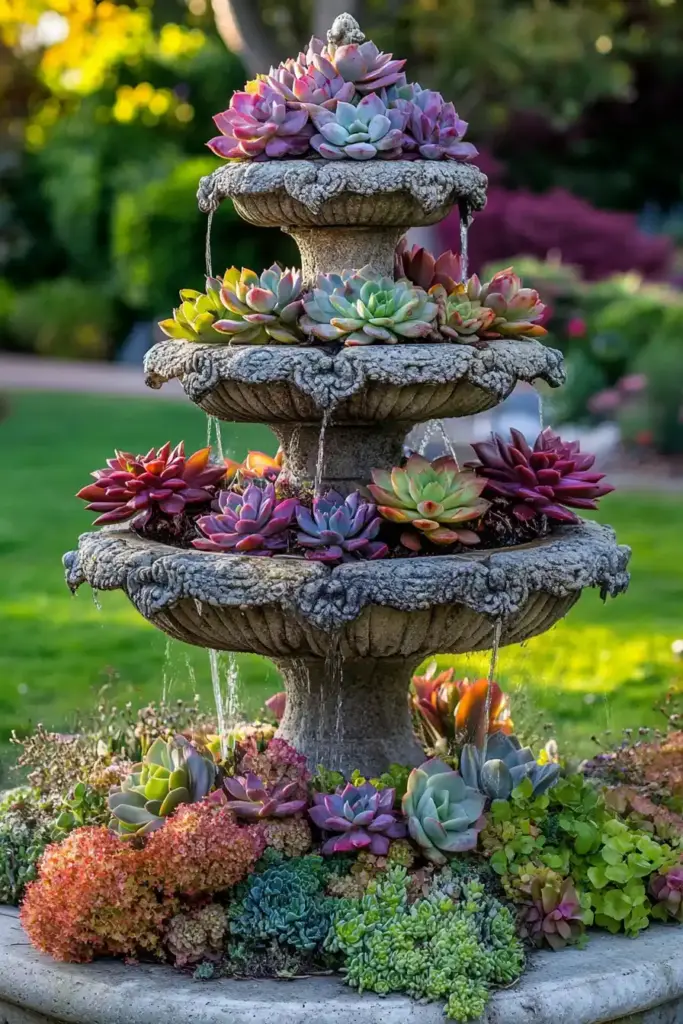
Add movement and a touch of tranquility to your garden with succulent fountains. Repurpose old water fountains by filling the basins with soil and a vibrant mix of cascading and upright succulents like string of pearls, echeveria, and crassula. You can either keep the fountain dry for a purely sculptural effect or let a gentle trickle of water flow around the plants to create a soothing ambiance. The layered tiers of a fountain are perfect for showcasing a variety of textures and colors, turning a traditional water feature into a living, drought-friendly centerpiece.
Succulent and Stone Compositions
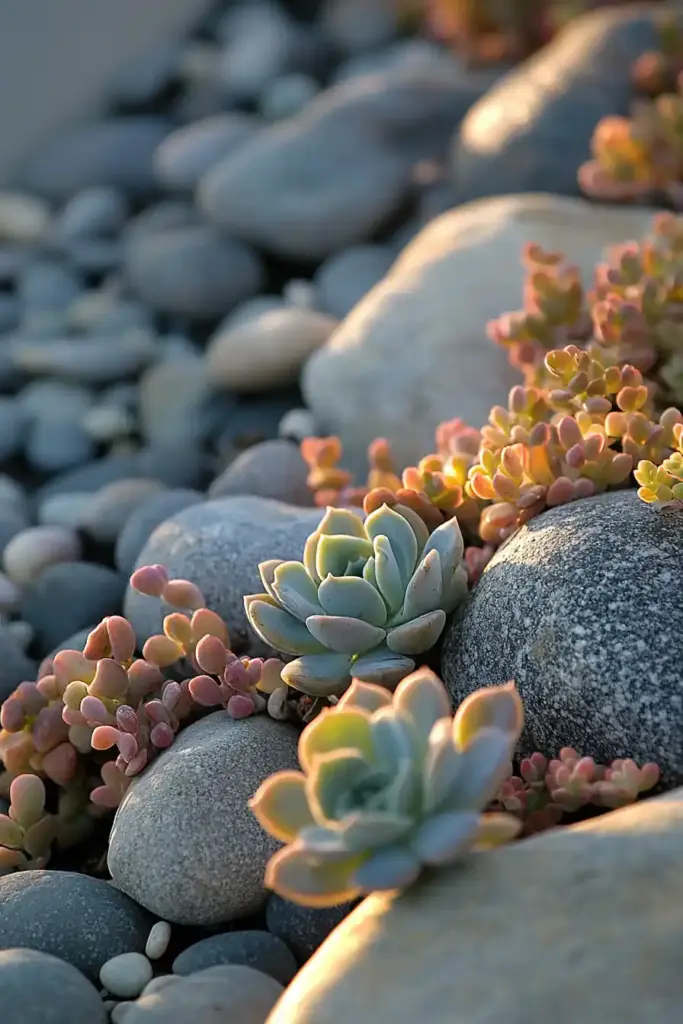
Celebrate rugged natural beauty by crafting succulent and stone compositions in your garden. Blend a variety of succulents — like agave, aloe, and sedum — with rocks, pebbles, and boulders to create dramatic contrasts in texture and color. Position larger stones as anchors and tuck succulents into the crevices to mimic how they grow in the wild. Play with different sizes and colors of rocks to add depth and dimension. These organic arrangements not only highlight the sculptural beauty of succulents but also promote excellent drainage, helping your plants thrive with minimal care.
Seasonal Succulent Displays
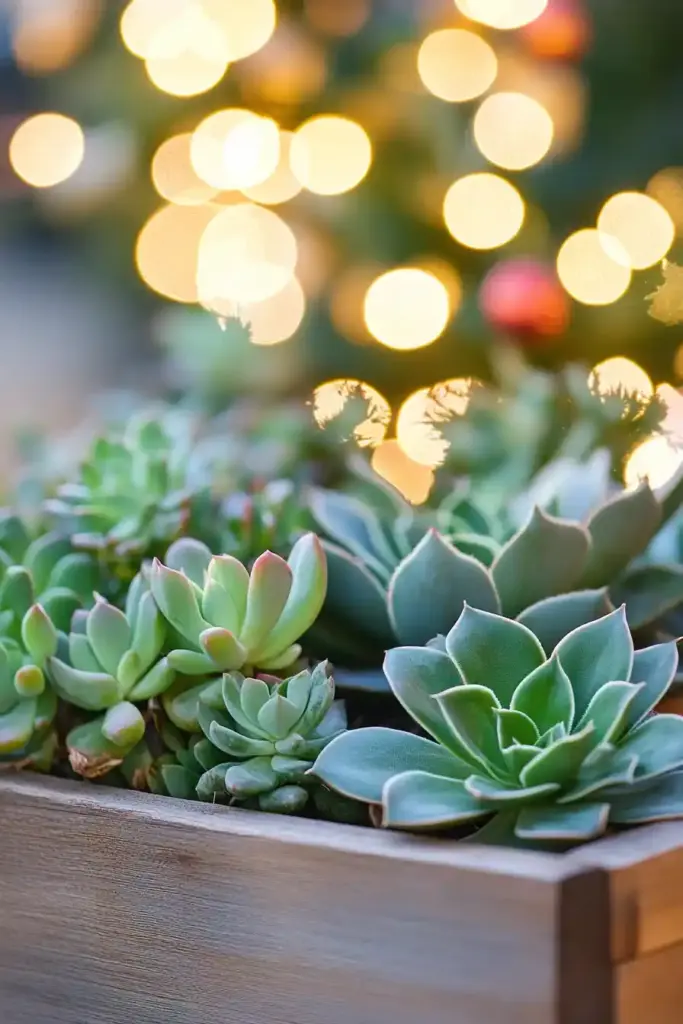
Keep your garden feeling fresh and festive year-round with seasonal succulent displays. Rotate your arrangements to reflect the seasons—incorporate warm-toned succulents like orange kalanchoe and red-tipped echeveria in fall, and softer pastel varieties like ghost plants (Graptopetalum paraguayense) in spring. You can also add seasonal accents like mini pumpkins, pinecones, or decorative ornaments among your succulents to enhance the theme. Changing your displays a few times a year not only keeps your garden visually interesting but also allows you to highlight different plants at their peak.
Succulent Terrariums
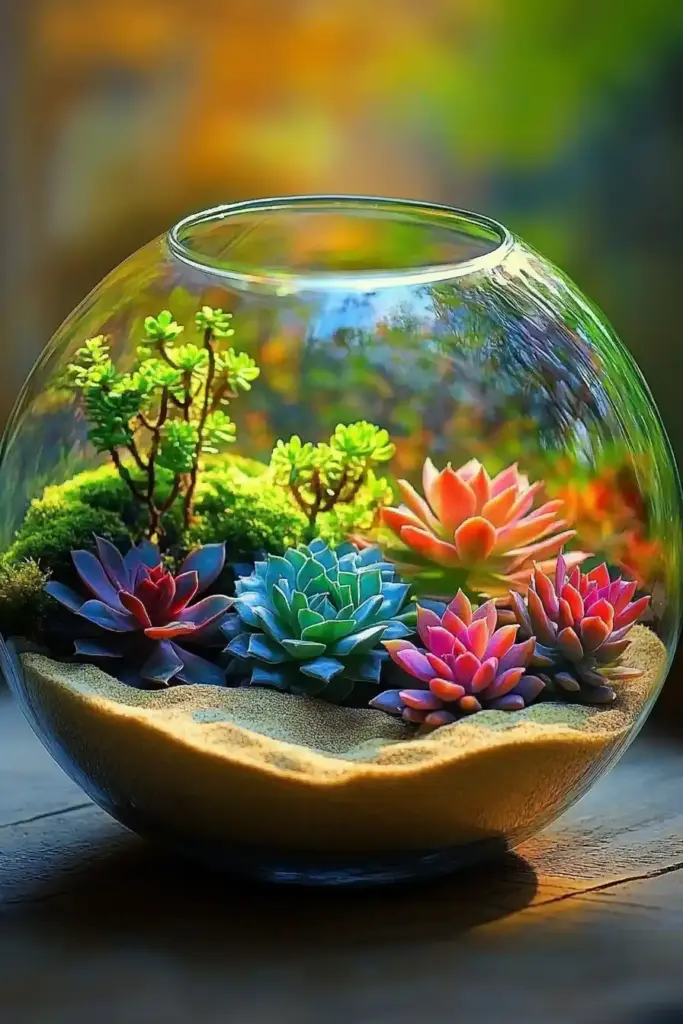
Bring a piece of nature indoors with charming succulent terrariums. These miniature gardens, housed in glass containers, are perfect for showcasing small succulents like haworthia, echeveria, and crassula. Start with a layer of pebbles for drainage, add cactus soil, and then arrange your succulents creatively inside open or semi-closed vessels. You can enhance the look with decorative sand, tiny figurines, or small rocks for added whimsy. Succulent terrariums are low-maintenance, space-saving, and make stunning centerpieces for tables, desks, or shelves, providing a touch of greenery to brighten any indoor space.
Wildlife-Friendly Gardens
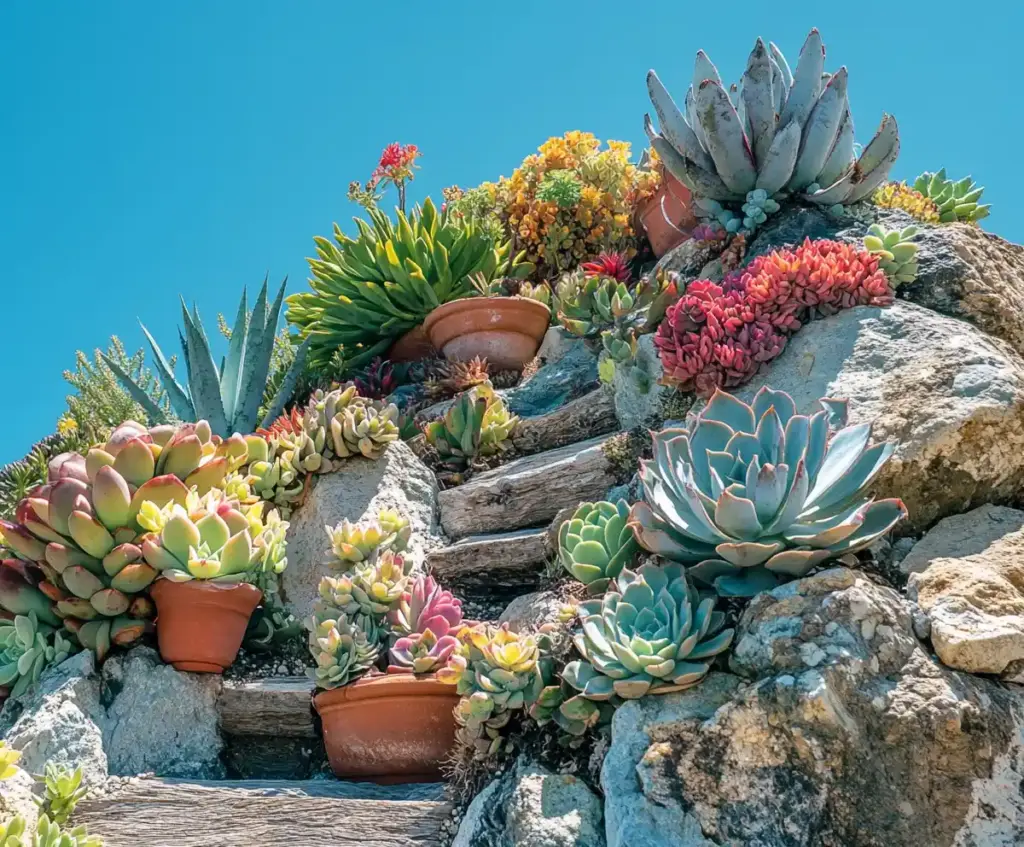
Support local ecosystems by designing wildlife-friendly succulent gardens that attract bees, butterflies, and other beneficial insects. Choose flowering succulents like aloes, sedums, and kalanchoes, which offer nectar and pollen sources throughout the growing season. Incorporate native plants alongside your succulents to provide additional habitat and food. You can also add shallow water dishes or bee hotels to encourage pollinators to linger. A wildlife-friendly garden not only brings vibrant life and movement to your outdoor space but also plays an important role in sustaining healthy, balanced environments.
FAQ About Succulent Landscape Design Ideas
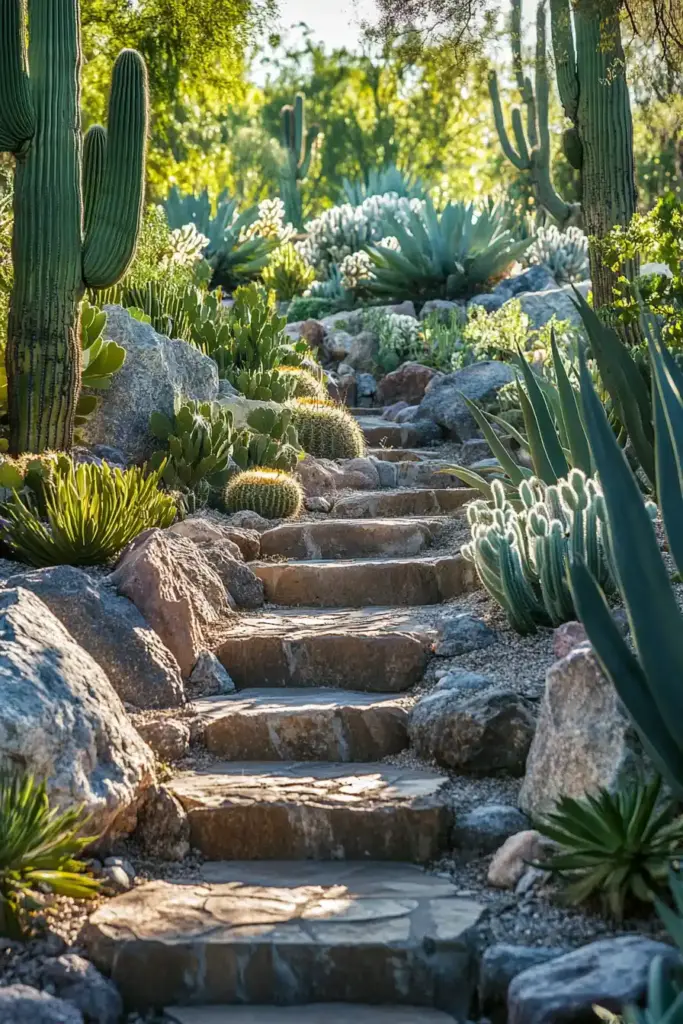
What are the best succulents for landscaping?
Some of the best succulents for landscaping include agave, echeveria, aloe, sedum, and crassula. These varieties are not only drought-tolerant but also offer a wide range of colors, shapes, and sizes perfect for creative garden designs.
How do I start a succulent landscape garden?
Begin by choosing a sunny spot with well-draining soil. Amend your soil if needed with sand or gravel for better drainage. Plan your layout using different heights, colors, and textures, then group succulents with similar water and light needs together. Don’t forget to mulch with gravel or small rocks to retain moisture and enhance aesthetics!
Can succulents survive without watering?
While succulents are incredibly drought-resistant, they still need occasional watering—especially during dry, hot periods. A general rule is to water deeply but infrequently, allowing the soil to dry out completely between watering sessions.
How do I maintain a succulent landscape?
Maintenance is easy! Remove dead leaves regularly, check for pests like aphids or mealybugs, and water sparingly. In colder climates, consider protecting your succulents from frost by bringing potted plants indoors or using frost cloths.
Are succulents good for small gardens?
Absolutely! Succulents are ideal for small spaces because they can thrive in containers, vertical gardens, and compact rock gardens. Their versatility allows you to create stunning designs even in tight areas like balconies or patios.
Conclusion
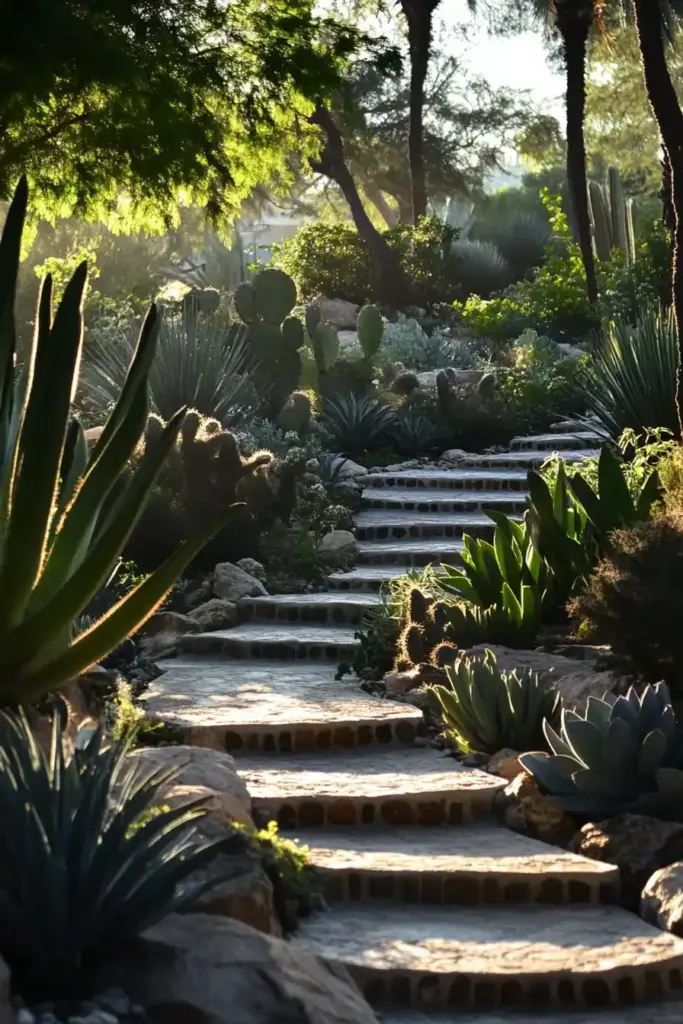
With so many creative succulent landscape design ideas to explore, transforming your yard into a drought-tolerant paradise has never been easier — or more exciting. From peaceful Zen gardens to vibrant seasonal displays, succulents offer endless flexibility for every style and space. Don’t be afraid to mix, match, and experiment with different textures, colors, and heights to craft a landscape that’s uniquely yours. Whether you’re working with a sprawling backyard or a cozy patio, succulents provide a sustainable, low-maintenance way to create an outdoor oasis that thrives beautifully year-round.

